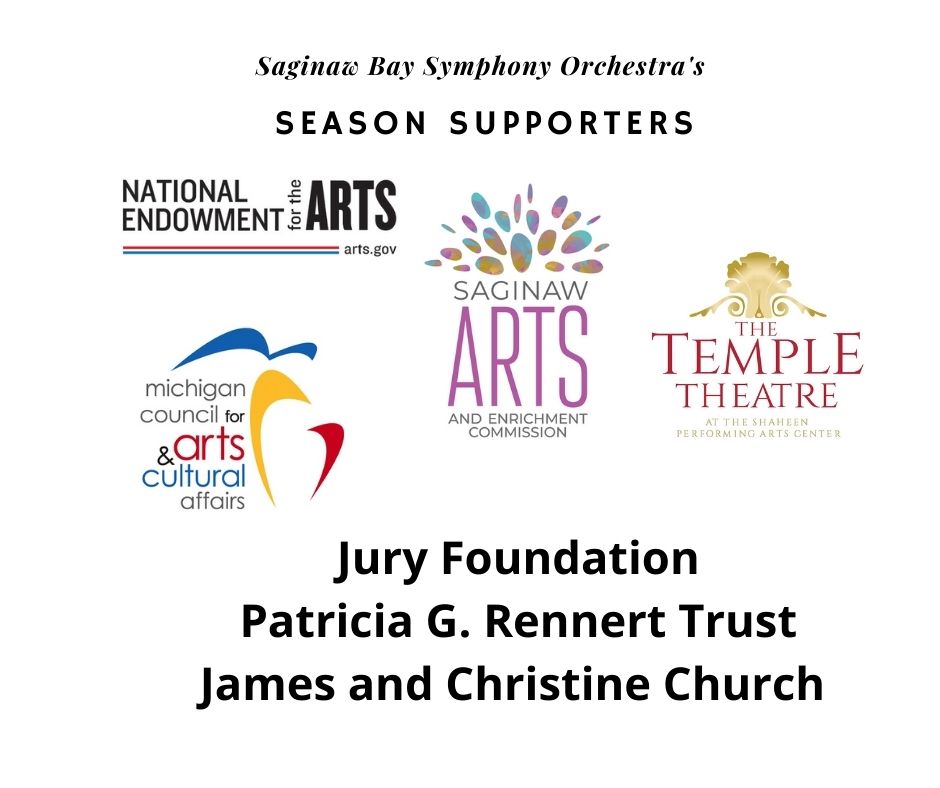A program for strings, bookended by Romantic works by Grieg, a Norwegian, and Dvořák, from Bohemia (now the Czech Republic). In between, we hear two seasonal works, Winter by Piazzolla and Winter by Vivaldi, both with the SBSO concertmaster, Eliot Heaton, as soloist.
Edvard Grieg (1843-1907), Holberg Suite
Grieg, by far the best-known Norwegian composer of his time, was commissioned to compose two works for the bicentenary in 1884 of Ludvig Holberg, a Norwegian writer who was a contemporary of Bach and Handel. The original title of the Holberg Suite is Fra Holbergs Tid [From Holberg’s Time]. Grieg decided to write a suite because the suite is a form often used in Baroque music, when Holberg was active. He originally wrote it for piano in 1884, before rescoring it for strings in 1885. The work is in five movements, including three Baroque dances.
The suite opens with a Prelude, a fast movement with a ubiquitous repeated-note rhythm, which is sometimes the melody itself and sometimes accompanies the melody. A Sarabande follows, slower and more dignified, in 3 with a characteristic emphasis on the second beat. The third movement is a Gavotte with a Musette trio before the Gavotte returns. A musette is a French bagpipe, and the dance is named for it because of the drones, which in this case can be heard in the cellos in the first of its two sections. Next comes an Air, with the tempo marking Andante religioso. The ornamental melody is heard first in the violins, then the lower instruments, while the rest of the strings give a steady eighth-note accompaniment. The finale is an upbeat dance, a Rigaudon, featuring a spiccato [bouncing bow] melody in G major. The trio is a little slower and in G minor before the lively Rigaudon returns to finish the suite.
Astor Piazzolla (1921-1992), Invierno Porteño [Buenos Aires Winter] from Cuatro Estaciones Porteñas [The Four Seasons of Buenos Aires]
Piazzolla was an Argentinian composer and bandoneón player (a type of accordion) who spent much of his youth in New York City. On his return to Buenos Aires he played and arranged tangos while studying classical composition with Alberto Ginastera. He then studied in Paris with Nadia Boulanger, who encouraged him to keep composing tangos. He began to merge traditional tango music with classical elements, forming what became known as “nuevo tango” style.
Piazzolla originally wrote his Four Seasons of Buenos Aires as separate tangos, but sometimes performed them as a set, making the reference to Vivaldi’s Four Seasons clear. He composed Buenos Aires Winter in 1969, scored for a tango band. In the late 1990s the Russian composer Leonid Desyatnikov reworked all four pieces for solo violin and string orchestra, adding references to Vivaldi’s Four Seasons to make the connections audible. Invierno Porteño is clearly a tango from the beginning. The single movement has many tempos, with passionate swings of mood, often an improvisatory style from the solo violinist, and clear hints of Vivaldi near the end.
Antonio Vivaldi (1678-1741), Winter from The Four Seasons
Vivaldi was a prolific composer, with an output of over 500 concertos alone. The Four Seasons are his best known concertos, published as part of a set of twelve entitled Il Cimento dell’armonia e dell’inventione [The Contest of Harmony and Invention]. Each of the four is based on a sonnet by an unknown author, which provided Vivaldi with the source of his programmatic music. He even labeled moments in the score to correspond with specific lines of poetry. A translation of the sonnet for Winter is given below, with the division for each of the three concerto movements indicated by the extra line spaces.
To tremble from cold in the icy snow,
In the harsh breath of a horrid wind;
To run, stamping our feet every moment,
Our teeth chattering in the extreme cold.
Before the fire to pass peaceful,
Contented days while the rain outside pours down.
To walk on the ice and, at a slow pace
(For fear of falling), move carefully.
To make a bold turn, slip, fall down.
To go on the ice once more and run hard
Until the ice cracks and breaks up.
To hear the Sirocco, Boreas, and all
The winds at war leave their iron gates:
This is winter, but, even so, what joy it brings!
(From the full score of The Four Seasons, edited by Eleanor Selfridge-Field, published by Dover)
The work opens with winter shivers in F minor, until the solo violin interrupts with a dramatic “horrid wind” gesture. Stamping feet and chattering teeth are both in evidence, created by Vivaldi’s characteristic driving rhythms, and wind (with more to come in the finale). The second movement is traditionally slower, and here the sonnet text suggests warmth (E-flat major) and comfort (a sustained solo violin melody with the orchestra creating a leisurely atmosphere), with raindrops pattering outside (pizzicato strings). The finale likewise illustrates the poem, starting with cautious movement on the ice (solo violin over a pedal) then a gradual picking up of pace. Winds from the south (sultry) and north (ferocious) come together and join forces for a vigorous end.
Antonín Dvořák (1841-1904), Serenade for Strings, op. 22 in E major
A serenade is generally considered less serious and intense than a symphony but without the dances typical of the suite. Dvořák composed op. 22 in less than two weeks in May 1875, and it was first performed the following year in Prague. Brahms had encouraged him to move to Vienna, but he was reluctant to leave his native Bohemia.
The serenade is in five movements. The first is very lyrical in the opening and closing sections, with a contrasting middle section that uses uneven dotted rhythms, as well as less smooth bowing. A waltz with trio follows. The waltz, too, is lyrical, with a typical oom-cha-cha waltz accompaniment. Its trio is more subdued. The third movement is labeled Scherzo and flies by until some unexpected slower passages make for changes of mood. It is in a form freer than the traditional A-B-A of a scherzo and trio.
The fourth movement is a genuine slow movement, marked Larghetto and in A-B-A form. It is delicate and often ornamental in the outer sections, but like the first movement more energetic in the B section. By contrast, the finale is loud, energetic, and at times playful, with several dance-like melodies. Dvořák quotes the opening melody from the first movement before the final outburst.
SAGINAW BAY SYMPHONY ORCHESTRA
Temple Theatre
Saturday, February 13, 2021, at 8:00 p.m.
Fouad Fakhouri, conductor
Eliot Heaton, violin
Sultans of Strings
Antonin Dvorak Serenade, op.22, B.52, E major
(1841-1904) I. Moderato
II. Tempo di valse
III. Scherzo: Vivace
IV. Larghetto
V. Finale: Allegro vivace
Antonio Vivaldi Le Quattro Stagioni, op.8
(1678-1741) L’inverno (Winter), RV 297
Astor Piazzolla Invierno Porteño
(1921-1997)
Edvard Grieg Holberg Suite, op.40
(1843-1907) I. Prelude
II. Sarabande
III. Gavotte and Musette
IV. Air
V. Rigaudon
You can help the Orchestra celebrate its 85th Anniversary Season by helping us continue our mission to provide exceptional experiences through high quality performances and innovative educational programs with your tax-deductible donation.


 20.mod.png)
 20.cs.png)
 20.mod.png)












